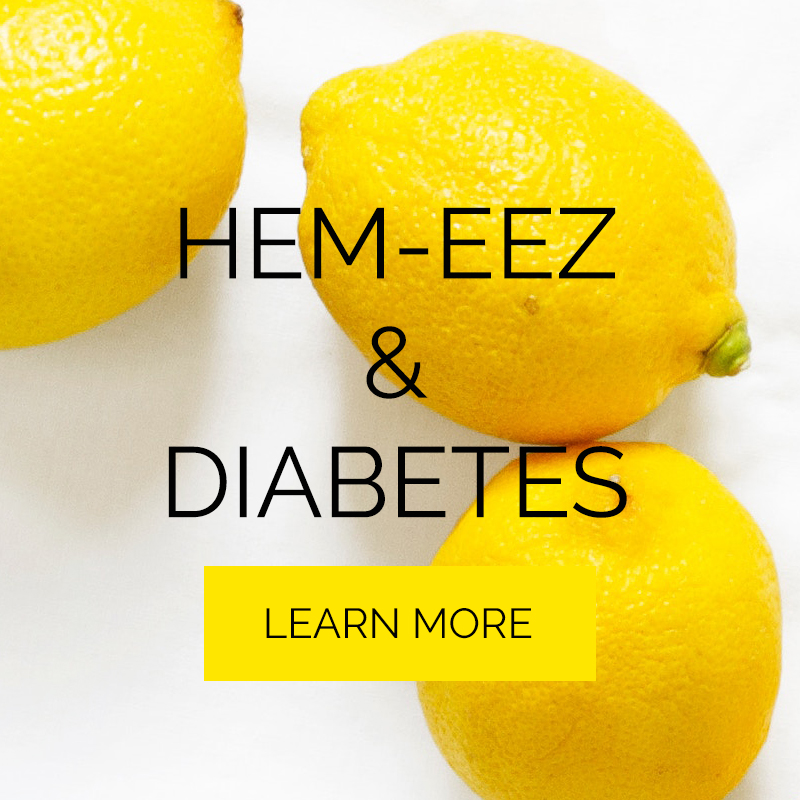HEM-EEZ AND inflammation
Why Hem-eez For Inflammation?
Hem-eez contains a special blend of active ingredients including Rutin and Citrus Bioflavonoids which are antioxidants that are found in citrus fruits. They are sometimes called vitamin P because it works in a similar fashion as many of the other important vitamins. Hem-eez contains important anti-inflammatory properties that have been shown to help fight infection, viruses, and free radical damage within your body.
In general Hem-eez slows down the normal breakdown of vitamin C which allows it to be more effective and active as well as assist in maximum absorption of other nutrients.
Other ways Hem-eez can work for you is through the antioxidants that it contains. They rid your body of toxins that come from pollution, cigarette smoke, herbicides, pesticides and so forth.
What is Inflammation?
Inflammation is a response of body tissues to injury or irritation; characterized by pain and swelling and redness and heat excitement within the body. Inflammation (Latin, inflammatio, to set on fire) is the complex biological response of vascular tissues to harmful stimuli, such as pathogens, damaged cells, or irritants. The state of being inflamed; A morbid condition of any part of the body, consisting in congestion of the blood vessels, with obstruction of the blood current, and growth of morbid tissue.
Recent studies and research indicates that inflammation is behind more than 80% of the conditions we suffer from – everything from arthritis to heart disease. If Allowed To Continue Inflammation leads to a host of health problems.
The sequence of events which occur during an inflammatory response can vary, depending on the type or cause of injury (i.e., Vessel damage, bacteria, cold, heat, trauma), the site of the injury, and the state of the body.
In a localized infection, for example, the sequence of events can be briefly summarized in 7 steps:
Entry of microbes (bacteria)
Vasodilation (widening of the lumen of blood vessels) of the microcirculation (small blood vessels) resulting in increased blood flow
An increase in vascular (a channel or vessel for the conveyance of a body fluid) permeability to protein
Filtration of fluid into the tissue which leads to swelling
Exit of neutrophils (a type of white blood cell) and later monocytes (another type of white blood cell) from the blood vessels into the tissues
Phagocytosis and destruction of the microbes
Tissue repair
Inflammation And Arthritis
The term arthritis literally means inflammation (itis) of the joint (arthr). Some of the types of arthritis which are associated with inflammation include:
Rheumatoid Arthritis
Gout
Tendonitis
Bursitis
Polymyalgia Rheumatica
Inflammatory Activity
When joint inflammation occurs, the increased number of cells and inflammatory substances within the joint cause irritation, wearing away cartilage (the cushions at the ends of the bones), and cause swelling of the joint lining. Even flu-like symptoms can accompany the inflammatory process.
Cycling
Tai Chi
Walking
Water Exercise
Yoga/Pilates
Organs
Examples of Inflammation can also affect organs in autoimmune diseases. Symptoms depend on the particular organ affected.
Inflammation of the heart (myocarditis) can cause shortness of breath or fluid retention.
Inflammation of kidneys is known as nephritis and may cause kidney failure or high blood pressure.
Inflammation of the large intestine, known as colitis, may cause cramps and diarrhea.
Inflammation Raises Rheumatoid Arthritis Cardiac Death Risks










